With these recipes and tips, you can easily make tit dumplings yourself. We show which bird species eat what and introduce various do-it-yourself bird foods.
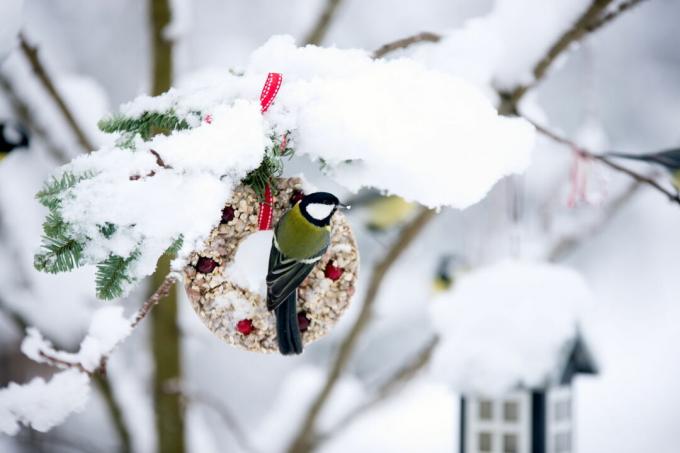
Freezing cold, snow and barely available food - for many wild animals winter is a challenge and associated with great privations. To the To help garden animals in winter, many garden owners lend a hand and provide the little garden visitors with additional food. Birds in particular are happy about the extra portion of food and are also wonderful to watch. But ready-made birdseed from the hardware store has numerous disadvantages. It is often not only particularly expensive, but also contains the seeds of the ragweed plant (Ambrosia artemisiifolia), which causes severe allergies in many people. If you want to be on the safe side, you can also make your own birdseed. We'll tell you here how to make your own tit dumplings and the like and what you need to consider.
contents
-
Which bird species eat what?
- 1. Grain eater
- 2. Soft food eater
- 3. Omnivorous
-
Make birdseed yourself
- 1. Make your own grain mix for birds
- 2. Make soft food for birds yourself
- 3. Make fatty food for birds yourself
- Unsuitable feed for birds
-
How and where are birds best fed?
- Matching feed dispensers for bird feeding
- The right location for bird feeding
Which bird species eat what?
Making birdseed yourself is a great way not only to give the little birds a helping hand, but also to be able to observe them up close. On closer inspection, however, one quickly sees that not all birds accept the food on offer well. Similar to humans, their tastes are different, so that different species of birds prefer different types of food. If you want to make birdseed yourself and use it to feed as many species as possible, you should know the following types of birds.
tip: If you want to support the birds in your garden, you can also sow a bird-friendly mixture of plants. Our Plantura beneficial insect magnet offers a wide variety of beneficial insects from garden birds to bees and bumblebees, food and habitat.
1. Grain eater
If you think of bird feeding, you probably have the classic grain feed in your head. Many native bird species such as the sparrow, finch or grosbeak actually prefer hard grains as their main food, which they can eat with their powerful beak. Basically, grain eaters tolerate almost all seeds, but sunflower seeds, linseed or hemp are particularly well accepted.
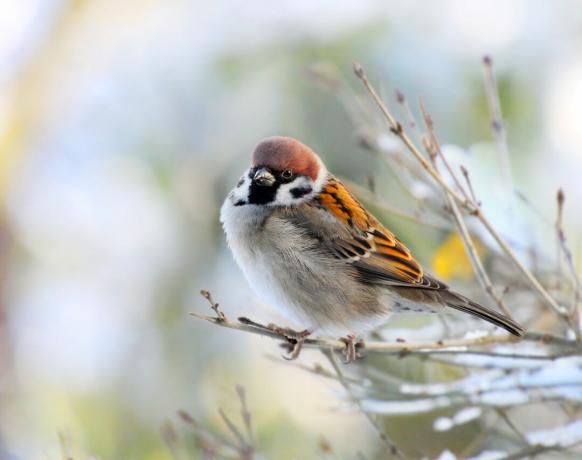
2. Soft food eater
In contrast to the grain eater, the soft food eater has a small, pointed beak that is hardly suitable for opening large grains. Usually they prefer to eat insects or berries, but smaller seeds such as poppy seeds or fruit are also on their menu. Soft feed eaters include, for example, the well-known Little Redlet, but also Wren, blackbird and star.
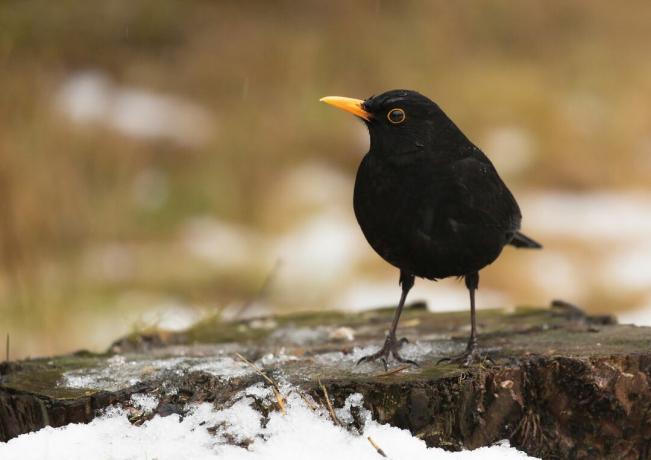
3. Omnivorous
They are probably the most uncomplicated fellows when you want to make bird food: "omnivores" like titmice, nuthatch or woodpeckers mostly prefer soft feed, but also use larger grains and other seeds. When feeding birds, you can see them pecking at both the soft feed and the grain mix.

Make birdseed yourself
If you think that making birdseed yourself is a lot of work, you are wrong. In fact, you can make almost any species of bird a joy in winter with simple recipes from household foods. In this way, you can easily make your own feed mixes as well as tit dumplings or tit rings.
1. Make your own grain mix for birds
Grain mixtures for bird feeding can be found in almost every DIY store or garden center. Unfortunately, these grain mixtures often contain ambrosia, the pollen of which can cause severe allergies. If you want to be absolutely sure, you can mix your own birdseed. About a third of the grain mix should consist of untreated sunflower seeds - you can even use these in your own garden Harvest sunflowers. Another quarter should consist of feed hemp seeds. Both grains have the advantage that, due to their high oil content, they are particularly rich in energy and thus represent a good source of food in winter. The rest of the bird food can be topped up with various ingredients. Unsweetened oat flakes, chopped hazelnuts or walnuts and small seeds are well suited for making birdseed yourself. The latter include, for example, millet or poppy seeds, but the seeds of native plants such as thistles are also very popular with birds.
Ingredients to mix your own birdseed for grain eaters
- A third of sunflower seeds
- A quarter of cannabis seeds
- Top up the rest with smaller seeds, oatmeal and chopped nuts
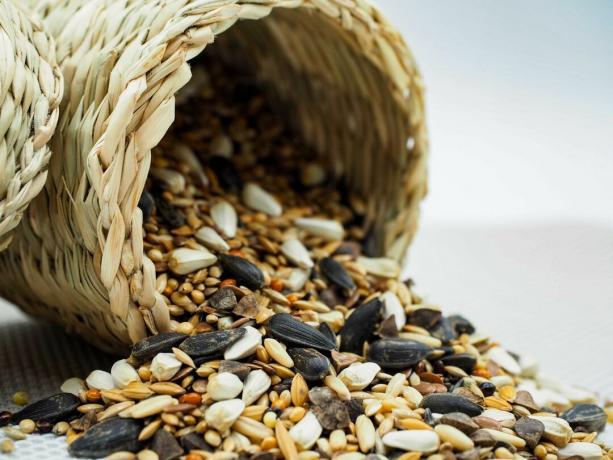
2. Make soft food for birds yourself
While food for grain eaters is known to almost everyone, one often looks in vain for food mixes for soft food eaters. The reason for this is the high perishability of many ingredients, which are preferred by soft food eaters. It is therefore best to mix your birdseed yourself: fine oat flakes have a longer shelf life as well Grain bran, which is therefore often used as the basis for soft feed and is also well received will. The whole thing can be refined with unsulphured raisins as well as berries or fruit. It is as sustainable as possible to fall back on seasonal and untreated alternatives: Storage apples can be stored properly stowed away without any problems throughout the winter and berries like Medlar (Mespilus germanica), Firethorn (Pyracantha coccinea) or sloe (Prunus spinosa) do not ripen until the beginning of winter. Alternatively, berries can also be dried in summer so that they can later be mixed with birdseed. Fruit like Apples (Malus) and Pears (Pyrus) should be cut open, but not cut into small pieces - the birds pick out beak-sized pieces for themselves. If you don't feel disgusted, you can also mix dried mealworms or other insects with the birdseed. Especially insectivores like robin and the wren are crazy about the protein-rich delicacies. Fine seeds such as poppy or thistle seeds are also popular with them.
Ingredients for birdseed for soft feeders:
- Fine oat flakes and grain bran as a basis
- Unsulphurized raisins
- Fresh fruit
- Fresh or dried berries
- Dried mealworms
- Fine seeds

3. Make fatty food for birds yourself
Fatty food Depending on the composition, it is suitable for both grain eaters and soft feed eaters - the high one Energy content due to the extra portion of fat makes this bird feeder ideal for especially in harsh winters Wild birds. The best known are tit dumplings and tit rings, which can be found in almost every store. Unfortunately, the industrially manufactured tit rings are often those containing ragweed seeds, or low-quality fat is used. If you want to avoid this, you can simply make tit dumplings yourself. In fact, this work is child's play and allows countless design options, so that making the birdseed is great fun.
To make the tit dumplings yourself, 300 grams of solid fat must first be heated on a hotplate. A common question in this context is which fat can be used for tit dumplings. In theory, all fats that are solid at low room temperature can be used. In practice, unsalted beef or mutton tallow, butter or lard is recommended. If you are looking for a plant-based alternative, you can also make tit dumplings with coconut fat. However, the use of coconut oil such as palmin for the production of birdseed should be viewed critically, as the production and transport of coconut oil are not considered sustainable. The best variant is therefore tit dumplings made from insect fat, which is a sustainable alternative to conventional fats and also goes better with the natural diet of wild birds.
Note: Also ours Plantura corn dumplings consist of high-quality insect fat that has been enriched with valuable seeds, nuts and berries. So if you don't want to make your own tit dumplings, you can easily buy ours with a clear conscience.
When heating animal fats, make sure that they only melt, but not boil - otherwise an unpleasant, rancid smell will quickly set in the apartment. Two tablespoons of cooking oil and about 300 grams of grain or soft feed mixture are then added to the soft fat. For grain eaters (as described above), sunflower seeds, hemp seeds and chopped nuts are particularly suitable, soft food eaters, on the other hand, prefer oatmeal, cereal bran and raisins. Mealworms can also be processed as a protein-rich component in the tit dumplings.

Now the hot mass must be brought into the right shape before cooling. Cookie cutters are perfect for this. These are spread out on a baking sheet, on which aluminum foil has been laid out beforehand, and then filled with the mixture. After cooling down, you can carefully poke a hole through the food figures with a wire to hang it up. Alternatively, you can work a band of fabric into the figure to hang it up before filling. Round cookie cutters are perfect for making tit rings yourself. Another possibility is to make a feeding bell: To do this, a twig is put through the hole in the floor and fixed with a wire - the birds will later find a hold on this. Then the liquid fat-grain mixture is poured into the flower pot. After cooling, the flower pot can be hung upside down. Poured into flower pot coasters or food bowls, the homemade birdseed is also suitable for feeding from the ground.
Recipe for making fatty food yourself
- Melt 300 g of fat (beef tallow, lard, etc.)
- Add 2 tablespoons of vegetable oil
- Add self-made feed mix for grain or soft feed eaters
- Bring into the desired shape (for example with a cookie cutter) or fill into a suitable container
- Let cool and serve to birds
Unsuitable feed for birds
Anyone who wants to feed birds really only has good things in mind. However, bird feed can also have fatal consequences in winter - unsuitable feed makes birds sick or even death. In general, all seasoned or salted dishes, including seasoned nut mixes, are not suitable, as birds cannot tolerate them and lead to gastrointestinal complaints. Bread is also popular as animal feed, but the consequences for birds can be devastating: in the worst case, it swells up in the bird's stomach and can thus become a death trap. Also (unprocessed) linseed, Rice, or chia seeds can have this effect. Moldy, rotten and rancid foods are inedible not only for humans but also for birds. Therefore these should not be fed and the feeding station should be cleaned regularly. Otherwise it can rot quickly, especially if fresh food such as fruit or berries is used. Of course, you shouldn't use moth-infested food any more.
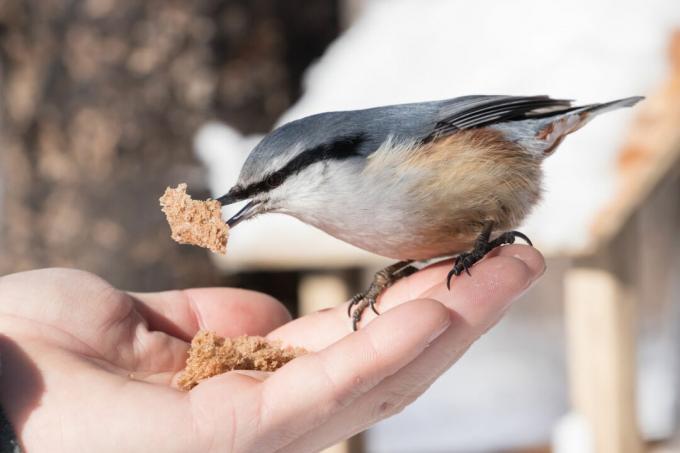
Unsuitable feed can not only be dangerous for birds, it can also be dangerous for our loved ones. Raisins are very popular with birds, but not recommended for households with dogs. As little as 10 to 30 grams of raisins per kilogram of body weight can be in a dog Cause symptoms of poisoning - a lot, which quickly when romping unobserved in the garden can be eaten. Instead, dog owners should use alternatives that are safe for their four-legged friends, such as dried berries. Children should not eat rowanberries (Sorbus aucuparia) or elderberries (Sambucus) to feed. Although these are a popular food among birds, they can, if raw, lead to poisoning in humans. Since children are drawn to the brightly colored berries all too quickly, it is better to use harmless alternatives here too.
How and where are birds best fed?
In fact, different species of birds prefer not only different feed, but also different feeding places. Soft food eaters are mostly also so-called bottom eaters, so they prefer to take their food directly from the earth. For reasons of hygiene, however, you should not sprinkle the homemade birdseed directly on the floor. It is better to use a small bowl or plate for bird feeding. So-called feeding tables, which are slightly raised, are also suitable. However, it must be ensured that no water can collect in the feeding station in order to prevent mold. Grain eaters and mixed feed eaters such as sparrows and titmouse, on the other hand, prefer to protect the trees. For this reason, hanging bird feedings, for example through feeding columns, tit balls or tit rings, are best for them.
But don't worry - you don't need a thousand feeding places in the garden to do justice to all the birds. In fact, almost all bird species feel themselves in the classic Bird feeder well. The straight bottom allows the soft feeders to perform their classic search and picking behavior during the Roof and the elevated position give the grain eaters sufficient coverage with a good overview at the same time Offer. With a sufficiently large bird feeder you can supply both types of feed with the self-made bird feed.

Matching feed dispensers for bird feeding
Tit dumplings, feed silo or the classic feed house? Meanwhile, a variety of different feeding methods are offered, so that it is hardly known which feeders are really suitable for bird feeding in winter. Above all, it is important that the feeding station remains dry and clean, which is why you should pay attention to a sufficiently large roof, especially with bird feeders. Homemade tit dumplings should also be attached where possible so that they do not get wet (for example in a feeding bell or in a suitable dispenser). In addition, the feeding station should always be kept clean. So-called feed silos or feed columns are the most hygienic here, as in these the feed does not come into direct contact with the animals or their droppings. In the traditional bird house, it should be possible to regularly remove food residues and wash them out with hot water. Classic tit balls in the net, on the other hand, are completely unsuitable - birds can get tangled in the fine threads and, in the worst case, strangle. If you have made your own tit dumplings, it is best to hang them up in a feeding dome or with a single cloth band in a dispenser so that this danger is eliminated.
The right location for bird feeding
Not only the right feed dispenser is a prerequisite for successful bird feeding - the right location also decides whether the feathered animals feel comfortable in the garden. So you should always make sure that the bird feeding takes place at least two meters away from the next pane of glass in order to avoid collisions. You should also choose a clearly arranged place for feeding, so that the birds can quickly discover possible predators such as cats or birds of prey and flee. Bird feeders should be attached at a sufficient height so that cats cannot simply jump into them. In addition, you should make sure that there are no trees or walls nearby - these are often misused by intelligent four-legged friends as a climbing aid.
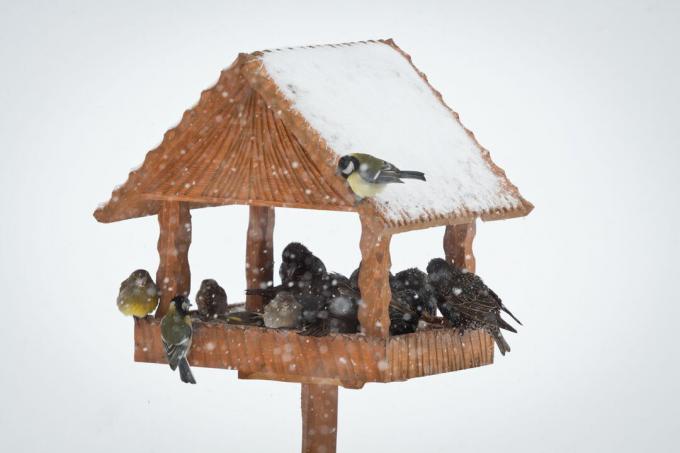
At a glance: how and where are birds best fed?
- Soft food eaters prefer to eat from the ground
- Grain feeders prefer tree feeding
- The bird feeder is suitable for all birds
- Food dispensers should be dry and clean
- Tit balls in nets are not suitable for feeding
- The right location for bird feeding is two meters away from the next pane of glass, clearly laid out and cat-safe
Do you want to do more for your garden birds? In these articles you will find 10 best plants for songbirds and a guide to Build a bird feeder yourself.

